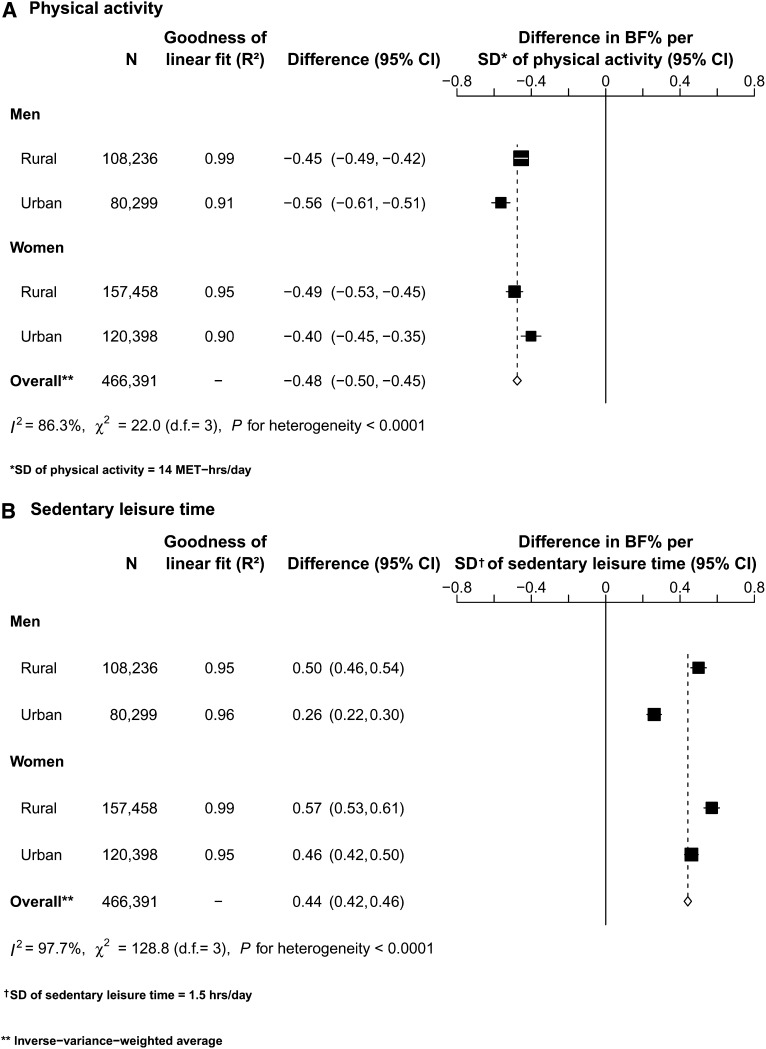FIGURE 3.
Difference in percentage body fat associated with a 1-SD greater self-reported physical activity (A) or sedentary leisure time (B) among 466,605 participants with no history of major disease (excluding 214 participants with missing values on percentage body fat). Each closed square represents the point estimate of the regression coefficient, and the horizontal bar represents its 95% CI, which was estimated by using multiple linear regression models. Adjustment was made for age (in 5-y intervals), study area, education, and annual household income. The size of the square is proportional to the inverse variance. The overall point estimates, calculated by using inverse-variance weighting, are represented by dotted lines and open diamonds; the width of the diamonds indicates the 95% CI. BF%, body fat percentage; MET, metabolic equivalent task.

